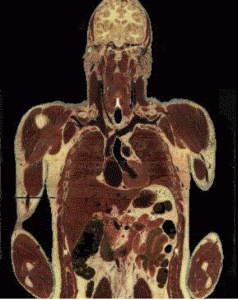It’s true: If you’re of a certain age, you know where you were on November 22 in 1963, the day that President John F. Kennedy was assassinated.
I was at school, a 9-year-old kid on a Friday afternoon, looking forward to a weekend of hanging out with my friends in the rec room, playing my sister’s records, enacting little dramas that starred my Barbie and Ken dolls.
But that was the weekend that wasn’t.
Teachers started moving from classroom to classroom. They whispered to each other. They held crumpled tissues in their hands.
We were led into the school’s “Materials Center,” and under the watchful eyes of the red-headed librarian, we sat quietly, focused on the flickering black-and-white tv.
The president has been shot. He may be dead. He may not be dead.
It was then official: “The president of the United States is dead.”
When I got home, the television was on. My mom had been ironing and watching As the World Turns when she heard the news.
I can still remember those images on the television set, Walter Cronkite’s face, the sound of his voice, Jackie climbing out of the back seat of the limo to reach out to the Secret Service agent.
How did she have the courage to do that? I imagined that if I were in that situation, I would have covered my head and scrunched down on the floor.
I remember being so moved by her heroic reaction. Would I ever be able to do something like that?
The strange, stinging drama played out on the screen, almost in slow motion although everything happened so fast.
One hour after Kennedy died, Lyndon Johnson was sworn in as president, while Jackie looked on, dazed, still wearing her blood-stained suit.
I remember thinking that it seemed harsh and callous to swear in a new president while we were all waiting for the old president to come back to life.
My dad said that the new president was sworn in right away because there had to be a leader in place. This made me afraid, as if something darker, more evil could be on its way, and someone needed to be in charge to shout out orders.
A few hours later, at 5 pm, we watched the televised landing of a coffin arriving in Washington D.C. How did everyone get packed up and fly across the country so quickly?
Before midnight, we learned that the police had arrested a gunman named Lee Harvey Oswald. How had that scenario happened?
We went to bed, stunned, trying to sort out this new reality. We got up in the morning and turned on the television, hoping for answers.
The new reality was still baffling: There was a flag-draped casket in the White House. President Kennedy’s famous rocking chair was unceremoniously rolled out through a side door.
We stayed glued to the tv set and watched other people watching tvs in front of department store displays, people gathering in town squares and in churches, people marching with torches and carrying signs. The entire world was grieving, some weeping, some with blank expressions. We were all on the same channel: There was not one person alive who did not know—could not not know–what was happening during this place in time and history.
I learned new words: Catafalque. Cortege. Caisson.
On Sunday, November 24, there was more pomp and circumstance as the casket went from the White House to the Capitol in a dramatic, slow-moving procession with funereal drums and the clip clop of horses. Then there were eulogies and proclamations, dignitaries and condolences, kneeling and whispers—all quiet and controlled.
In contrast to that solemnity, we got to see a live murder on tv as Jack Ruby pulled out a gun and shot Oswald right in the gut.
I didn’t know it then, but we were ushering in a new era of watching people get shot on television. It was going to be different from the usual fare, which included shows like Dick Van Dyke, The Flintstones, Mister Ed, and Andy Griffith.
The world had gone mad, yet there was an order, a surreal serenity. I still wanted to know: How did so many people know what to do?
On Monday, November 25, we watched the funeral, a solemn parade led by a jumpy, riderless horse named Black Jack. In his stirrups there were black boots, facing backwards, a symbol of a fallen leader.
I wondered how all of this was put together, so impeccable and calibrated, so dramatically arranged. Was there a plan laid out in a secret folder that had been labeled: “Here’s What We’ll Do If the President Is Assassinated”?
How did Jackie decide what to wear? When did she have time to shop for mourning clothes? I remember the voices on tv talking about her choice of veil.
The performances of both man and beast were nothing short of mesmerizing—even the one from little John-John who raised his hand into a salute as his father’s casket passed by. He was only three!!! And here he was making a perfectly innocent, sweet, and painful gesture that moved us all to tears. How in the world did this precious boy in the double-breasted coat know that he should do that? Most three-year olds I knew would have been all wriggling and squealing.
The summer before the assassination, our family took a road trip to Washington, a sort of homage to the Kennedys, I suppose. They were rock stars! We got to walk around the White House, the place where they lived! Caroline’s pony Macaroni was eating grass in the yard!
As part of our trip, we visited Arlington Cemetery, the Tomb of the Unknown Soldier, and graves of WWII vets my father had known from his time in the war. It was such a sad and moving day. As we stood on a hill overlooking the fields of white headstones, my mom said, “Somebody important is going to be buried here.”
My whole family felt a bit unsettled, especially my mom, when we saw that they were burying the president in the exact same place where we had stood on that hill.
I was confused and scared during those days, and I also felt inadequate. All I could do was sit there and watch television…and wonder how so much calm could be happening while the chaos of loss swallowed us whole.
But something was coming to light: If everyone knew what they were supposed to do during times like these, maybe it was because such devastating things happened before. Maybe Tragedy was always in the wings, waiting to make another entrance when you least expect it. Maybe I was learning lessons about life a little faster than I wanted to.
Five days later, on November 29, The Beatles released their single “I Want to Hold Your Hand.” How in the world did John, Paul, George, and Ringo know that was exactly the song that I wanted–and needed–to hear?
Related articles
- 20 Facts About The JFK Assassination (rememberingjfk.wordpress.com)
- Video: JFK assassination an indelible part of Dallas’ history (cbsnews.com)









